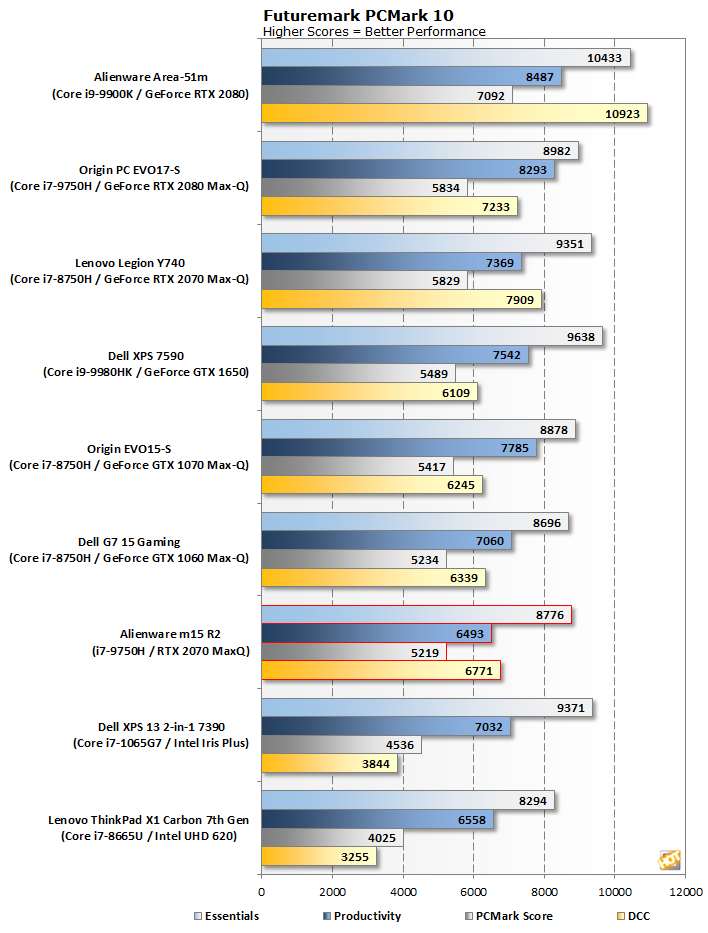Alienware m15 R2: PCMark and 3DMark Testing
|
PCMark 10 uses a mix of real-world applications and simulated workloads to establish how well a given system performs productivity tasks, including image and video editing, web browsing, and OpenOffice document editing. While these scores appear to be all over the place, the systems are sorted by their overall PCMark score, which is the third (gray) bar in each cluster.

For the first time, one of our tests puts that high-powered GeForce RTX 2070 Max-Q to work. The Digital Content Creation score here is nearly twice that of systems with built-in graphics, and right in line with other discrete solutions. That helps boost the overall PCMark score to be within 5% of the other hexacore Core i7-equipped systems on our chart. Don't be fooled by the relatively low positioning here. Only 10% separates second and seventh places in our rankings.
|
3DMark is a synthetic GPU benchmark for assessing graphics performance. 3DMark supports both DX11 and DX12, depending on the particular test being run, which makes it handy for testing GPUs of various performance levels. Fire Strike has a series of presets built in that range from normal to "Ultra". We used the Extreme preset, which renders the test at 2560x1440 with all of the bells and whistles enabled.

|
Time Spy is 3DMark's DirectX 12 test. This test also has multiple presets, but the standard Time Spy stresses even a fast gaming desktop pretty heavily on its own, so that's what we stuck with.

Once again, the Alienware m15 R2 is the fastest 15" notebook on our list by a pretty substantial margin. The Core i7-9750H rips through the CPU portion of the test and the GeForce RTX 2070 Max Q handles the graphical tests with ease. If you haven't figured it out yet, this system is a powerhouse of a gaming notebook.
|
Port Royal is the newest test in 3DMark's arsenal, which examines DXR ray tracing performance. Since ray tracing hardware acceleration is required, we've eliminated all of the Pascal systems from our earlier test from competing, and as a result the collection of hardware here is somewhat less than before.

The results here are exactly what you'd expect, with the exception of the poor showing from the Lenovo Legion Y740. The Alienware machine performs in line with what you'd expect from this combination of a hexacore CPU and a lower-power GeForce RTX 2070 Max-Q. The rest of the systems on this chart are desktops or, in the case of the Area-51m, desktop hardware in a notebook chassis. Bearing that in mind, it's awfully hard to be disappointed with the m15 R2's showing here.
Nobody plays 3DMark, and this is a gaming notebook. So next up we'll take a look at performance in several games...






